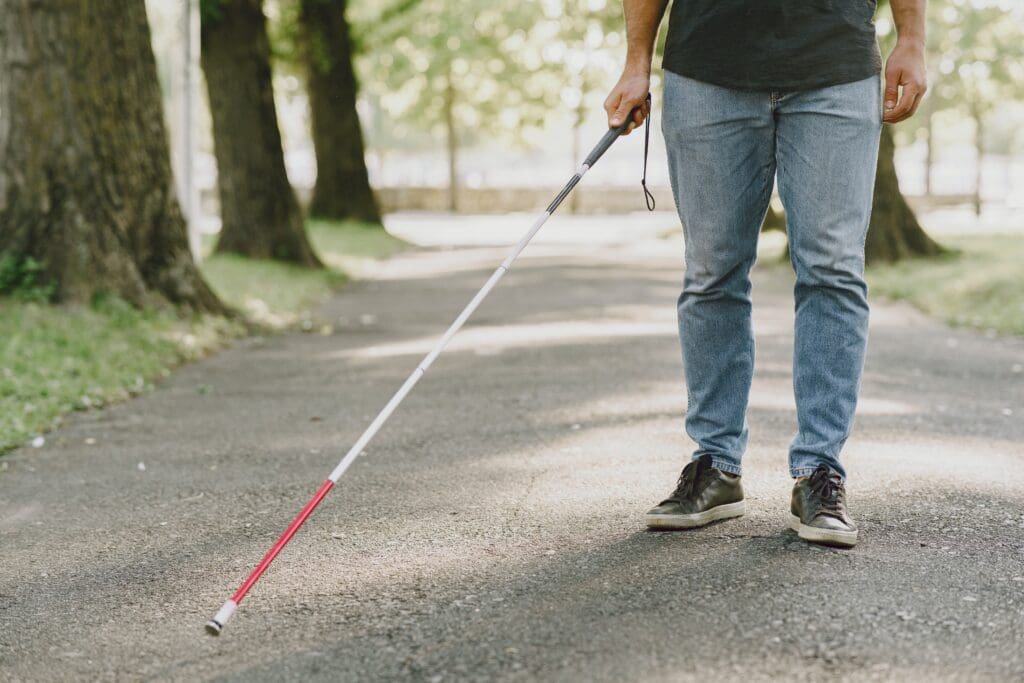
By Claire Stanley and Becky Davidson
Introduction
America Walks supports safe streets for vulnerable users such as pedestrians and people with disabilities. A “Walk” signal which guarantees that no vehicles will drive across the crosswalk is a safe system, but most signalized intersections allow turning vehicles to cross the crosswalk during the “Walk” phase although they are supposed to yield to pedestrians. “Lead Pedestrian Interval” (LPI) is intended to improve safety by activating the “Walk” signal a few seconds before a green light allows vehicular movement. However, as our friends and colleagues who advocate for blind and sight-impaired people point out, LPI must be combined with Accessible (audio-enabled) Pedestrian Signals.
Leading Pedestrian Intervals (LPI) at signalized pedestrian crossings are becoming increasingly common. They are applauded for adding an extra measure of safety for pedestrians by giving them a few seconds to start crossing the intersection before the vehicle traffic gets the signal to move. Great idea, right? Yes, unless you are a blind, deaf-blind, or visually impaired pedestrian.
Here’s Why:
People who are blind can generally receive orientation and mobility training provided by specialists with specific credentials. They may receive this training in school or as part of rehabilitation. It provides skills needed to navigate their environment safely, usually using a white cane to begin with. When it comes to crossing streets, the basic premise is that one listens to the traffic moving in front of or beside you. When the traffic beside you goes forward, that would indicate that it’s safe to move across the street. In today’s pedestrian environment, things have become more complicated with turning lanes, walk signals, and now LPIs.
The progress of Accessible Pedestrian Signals (APS)
Blind pedestrians have been advocating for Accessible Pedestrian Signals (APS) for years, and some progress is being made. The ADA requires that people with disabilities have full and equal access to their environment. That can be curb ramps, tactile warning strips, and, for the blind and deaf-blind pedestrian, information presented audibly and tactilely that others receive visually. This becomes more critical when there’s an LPI.
Without receiving the audible cue that the interval has begun, the blind pedestrian taught and accustomed to waiting for the traffic movement to decide to cross, will lose the advantage of those extra few seconds to cross the intersection. That will put the pedestrian in a very vulnerable position. Drivers are expecting the pedestrian to cross with the LPI.
With pedestrian-vehicle crashes steadily increasing, ALL pedestrians must have access to ALL safety measures intended to reverse this trend. LPIs are a great idea as long as they are fully accessible to ALL pedestrians.
Claire Stanley is a Public Policy Analyst with National Disability Rights Network and Board Member with America Walks